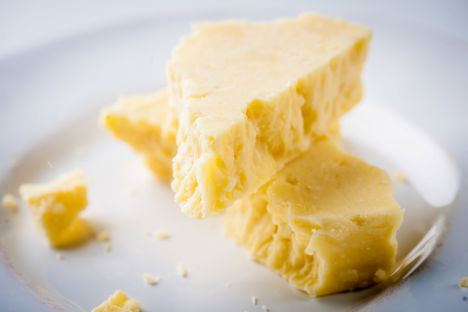
Ingredient focus: cheddar
The country’s most popular cheese is also one of the oldest. Whether it’s melted on toast, used in baking or just served on the cheeseboard, we can’t get enough of cheddar’s strong, savoury flavour and creamy, crumbly texture.
View more from this series:
Ingredient focusCheddar has some serious history behind it. The cheese has been produced in the UK since the 12th century and was aged in caves in Somerset; at that time the best cheese was said to come from Cheddar Gorge, hence the name (the Cheddar Gorge Cheese Co are still in production today). There used to be hundreds of cheddar producers in Britain, but during the second world war when milk was rationed, only one cheese (‘government cheddar’) was allowed to be made, so many producers fell by the wayside. Artisan cheddar making has been fighting its way back in the last twenty years, with producers popping up all over the UK; West Country Farmhouse Cheddar is now an official PDO-protected food made in Devon, Dorset, Somerset and Cornwall. Cheddar sales account for over half of all cheese sales in the UK, with the average person eating three and a half kilos of it every year.
Flavour profile
The exact flavour of cheddar differs from truckle to truckle; everything from the cows’ diets to their location can affect the final taste. However, there are certain qualities to look for that will always be present in a good cheddar. The cheese should be creamy, with a perfect balance of sweet and savoury flavours and an overall tanginess that lingers on the palate. Cheddar also has an unmistakable nuttiness, similar to buttery hazelnuts.
If the cheese has been matured properly it will crumble without being too dry and melt in the mouth. The more mature the cheese, the more acidic and salty it will become as it loses moisture. Cloth bound farmhouse varieties tend to be stronger in flavour, especially when unpasteurized, as bacteria that are killed in the process of pasteurisation enhance the final taste.
Food matches
During the maturation process the flavours of Cheddar develop and become more pronounced. Cheese that has been aged for long periods of time, such as Davidstow’s three year old cheddar, are best served simply with a cracker and a large glass of red wine or cider for a more traditional Cornish accompaniment.
Cheddar’s best friend is bread, a simple yet perfect match. Try Pete Biggs’ Bacon cheddar and onion flatbread for a tasty snack or Nathan Outlaw’s Watercress soup with cheddar toasties. Cheddar also lends itself to pastry; think ham and cheese croissants for breakfast or give Victoria Glass’s Cheddar and leek tarts a go for a simple lunchtime treat. Galton Blackiston’s divine Cheddar beignets with sesame dressing would go down a storm as a canapé at a dinner party.
Cheddar also works well alongside fruits. We’ve all tried grapes on the cheeseboard but why not try slices of apple and pear? Have a go at Cheddar scones with grilled figs, and don’t forget the pickles and chutneys that compliment the creaminess of cheddar so well.
Did you know?
It takes ten litres of milk to produce a kilogram of cheddar.
The Davidstow creamery produces 1000 tonnes of cheese per week.
A wheel of cheddar weighing over 70 stone was given to Queen Victoria as a wedding present.


